2011
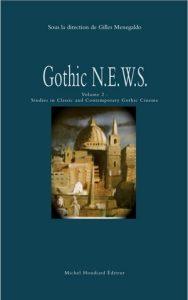 Contemporary Asian horror films seem to be particularly fond of resorting to various techniques of visual recording. This paper focuses in more detail on two such relatively recent films: a Hong Kong production Abnormal Beauty (2004), directed/produced by Oxide and Danny Pang and a Thai film Shutter (2004), directed by Banjong Pisanthanakun and Parkpoom Wongpoom, both of which feature professional photographers as main protagonists and resort consequently to the notion of photography as a key concept for the narrative structure and the films’ visual organisation. The paper will examine the ways the two films exploit photography’s specific relation to death and the afterlife, raising the question whether the theoretical discourse of photography can potentially “westernise” the narrative technique of an Asian film.
Contemporary Asian horror films seem to be particularly fond of resorting to various techniques of visual recording. This paper focuses in more detail on two such relatively recent films: a Hong Kong production Abnormal Beauty (2004), directed/produced by Oxide and Danny Pang and a Thai film Shutter (2004), directed by Banjong Pisanthanakun and Parkpoom Wongpoom, both of which feature professional photographers as main protagonists and resort consequently to the notion of photography as a key concept for the narrative structure and the films’ visual organisation. The paper will examine the ways the two films exploit photography’s specific relation to death and the afterlife, raising the question whether the theoretical discourse of photography can potentially “westernise” the narrative technique of an Asian film.

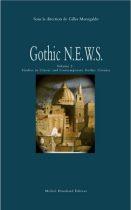
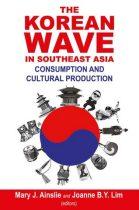
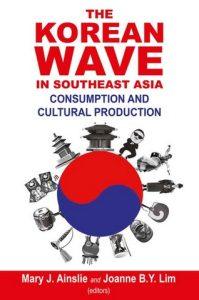 This paper examines Korean influences on contemporary Thai cinema in terms of genre development, narrative structure and co-production. It will discuss the emergence of the strong “masculinised” heroine in Thai comedies, re-configuration of the horror, comedy and action thriller genres, changes in the narrative strategies of 21st century Thai films, and the results of creative co-production between Thailand and Korea.
This paper examines Korean influences on contemporary Thai cinema in terms of genre development, narrative structure and co-production. It will discuss the emergence of the strong “masculinised” heroine in Thai comedies, re-configuration of the horror, comedy and action thriller genres, changes in the narrative strategies of 21st century Thai films, and the results of creative co-production between Thailand and Korea.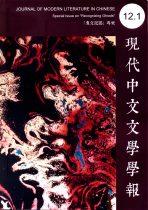
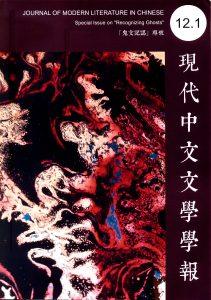 With their themes of ghosts, violence and monstrosity, horror films have been instrumental in capturing the ghostly returns of collective trauma. Thai horror, unsurprisingly, also cannot disassociate itself from history. Through their ghosts and, more recently, through their turn to “body horror,” contemporary Thai horror films come to terms with the “wounds” in the country’s social fabric. The strategies of archivization of Thai history and cultural memory used in these films vary, since some traumatic incidents in Thai history have been denied the right to be remembered by the state apparatus. Other, less politically-repressed events, such as murders, accidents, or cases of gross negligence are meticulously reconstructed from available authentic sources and reproduced in Thai horror films, which take on the function of becoming the archives of Thai popular memory. This article discusses Thai horror films’ strategies of archivization of Thailand’s past.
With their themes of ghosts, violence and monstrosity, horror films have been instrumental in capturing the ghostly returns of collective trauma. Thai horror, unsurprisingly, also cannot disassociate itself from history. Through their ghosts and, more recently, through their turn to “body horror,” contemporary Thai horror films come to terms with the “wounds” in the country’s social fabric. The strategies of archivization of Thai history and cultural memory used in these films vary, since some traumatic incidents in Thai history have been denied the right to be remembered by the state apparatus. Other, less politically-repressed events, such as murders, accidents, or cases of gross negligence are meticulously reconstructed from available authentic sources and reproduced in Thai horror films, which take on the function of becoming the archives of Thai popular memory. This article discusses Thai horror films’ strategies of archivization of Thailand’s past.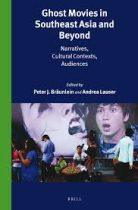
 Thai spiritualism, attributed by some anthropologists to the hybridization, consumerization and politicization of Thai popular religion, can be seen as having significant consequences for the study of Thai horror cinema, since it allows for both a metaphorical (modern) and literal (pre-modern) reading of its ghost movies. On the literal level, these movies function as a fictional retelling of real or hypothetically possible spiritual encounters, and by tapping into the personal experience of their audience they can be found particularly frightening. On another hand, if the filmmakers stray too far from the audience’s expectations they risk getting seriously criticized for producing an “unconvincing” film narrative. Adding to this, the movies themselves are frequently being produced and promoted in a variety of supernatural contexts, including making offerings to the spirits, employing mediums and fortune tellers, or documenting instances of haunting on set. Last but not least, as a peculiar form of spiritual exchange, movies (though not necessarily horror movies) are commonly being screened at shrines and temples to appease local spirits and deities, or as a form of post-mortem entertainment for the recently deceased during the wake. This paper discusses these and other examples of the mutual relationship between Thai horror movies and Thai spiritualism and suggests a connection between the popular animistic, mediumistic and religious practices of the Thais and their love of horror cinema.
Thai spiritualism, attributed by some anthropologists to the hybridization, consumerization and politicization of Thai popular religion, can be seen as having significant consequences for the study of Thai horror cinema, since it allows for both a metaphorical (modern) and literal (pre-modern) reading of its ghost movies. On the literal level, these movies function as a fictional retelling of real or hypothetically possible spiritual encounters, and by tapping into the personal experience of their audience they can be found particularly frightening. On another hand, if the filmmakers stray too far from the audience’s expectations they risk getting seriously criticized for producing an “unconvincing” film narrative. Adding to this, the movies themselves are frequently being produced and promoted in a variety of supernatural contexts, including making offerings to the spirits, employing mediums and fortune tellers, or documenting instances of haunting on set. Last but not least, as a peculiar form of spiritual exchange, movies (though not necessarily horror movies) are commonly being screened at shrines and temples to appease local spirits and deities, or as a form of post-mortem entertainment for the recently deceased during the wake. This paper discusses these and other examples of the mutual relationship between Thai horror movies and Thai spiritualism and suggests a connection between the popular animistic, mediumistic and religious practices of the Thais and their love of horror cinema.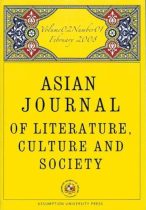
 This paper examines the notion of spiritual technologies, understood in a twofold manner. On the one hand, based on an analysis of a number of contemporary East Asian and South East Asian horror films, the discussion will focus on the ways modern technologies, particularly visual and media technologies, have contributed to a shift in understanding the concept of the ghost. On the other hand, this paper will focus in more detail on the case of Thai horror cinema, where ghosts have become a narrative technique and ghost stories seem to have contributed to the development of cinematic technologies in general.
This paper examines the notion of spiritual technologies, understood in a twofold manner. On the one hand, based on an analysis of a number of contemporary East Asian and South East Asian horror films, the discussion will focus on the ways modern technologies, particularly visual and media technologies, have contributed to a shift in understanding the concept of the ghost. On the other hand, this paper will focus in more detail on the case of Thai horror cinema, where ghosts have become a narrative technique and ghost stories seem to have contributed to the development of cinematic technologies in general.
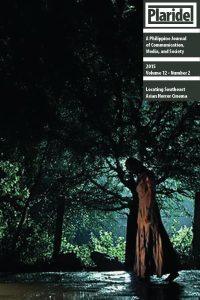 This article offers a brief historical and theoretical overview of found footage films and their contribution to the horror genre, and focuses in more detail on four Southeast Asian productions of the kind made between 2009-2012: Keramat/Sacred (Servia & Tiwa, 2009), Seru/Resurrection (Asraff, Pillai, Andre & Jin 2011), Haunted Changi (Kern, Woo & Lau, 2010), and Darkest Night (Tan, 2012), all of which can be viewed as an alternative to the mainstream local horror cinema. The paper argues that the two most common strategies used by found footage horror films (including the four films in question) are the techniques that effectively authenticate the horror experience: inducing a heightened perception of realism in the audience and a contradictory to it feeling of perceptive subjectivity.
This article offers a brief historical and theoretical overview of found footage films and their contribution to the horror genre, and focuses in more detail on four Southeast Asian productions of the kind made between 2009-2012: Keramat/Sacred (Servia & Tiwa, 2009), Seru/Resurrection (Asraff, Pillai, Andre & Jin 2011), Haunted Changi (Kern, Woo & Lau, 2010), and Darkest Night (Tan, 2012), all of which can be viewed as an alternative to the mainstream local horror cinema. The paper argues that the two most common strategies used by found footage horror films (including the four films in question) are the techniques that effectively authenticate the horror experience: inducing a heightened perception of realism in the audience and a contradictory to it feeling of perceptive subjectivity.
 While folk horror has never been identified as exclusive to western cinema, most studies of the topic have so far been strongly aligned with western world-views, philosophies and methodologies. This makes it difficult to apply their findings to films made in non-Christian non-western countries, such as Thailand. This article discusses Banjong Pisanthanakun’s film Rang Song (The Medium) (2021) as a case in point to demonstrate how folk horror operates as a mode in Thai cinema. Building on the existing studies and modifying the current definitions of folk horror to apply them to the Thai cultural context, the article argues that Thai folk horror narratives are steeped in representations of the urban–rural divide that pit metropolitan Bangkok against low-income provinces (in particular, the northeastern region of Isan) and reflect on cultural tensions related to ethnicity and class.
While folk horror has never been identified as exclusive to western cinema, most studies of the topic have so far been strongly aligned with western world-views, philosophies and methodologies. This makes it difficult to apply their findings to films made in non-Christian non-western countries, such as Thailand. This article discusses Banjong Pisanthanakun’s film Rang Song (The Medium) (2021) as a case in point to demonstrate how folk horror operates as a mode in Thai cinema. Building on the existing studies and modifying the current definitions of folk horror to apply them to the Thai cultural context, the article argues that Thai folk horror narratives are steeped in representations of the urban–rural divide that pit metropolitan Bangkok against low-income provinces (in particular, the northeastern region of Isan) and reflect on cultural tensions related to ethnicity and class.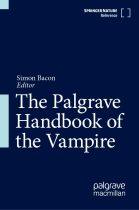
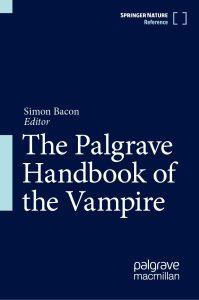 This article discusses the vampiric representation of the jiangshi in Hong Kong and Chinese cinema. The paper argues that while the jiangshi is a monstrous creature in its own right, over the years it has undergone a number of changes to align it with Western vampires. The article begins with a brief discussion of the jiangshi as a literary trope introduced in Chinese stories of the strange, particularly those written during the Qing period. The paper then examines three major shifts in cinematic representation of the creature from its early appearances in the 1980s Hong Kong cinema where it is compared and contrasted with Western vampires, and its post-Handover evolution that follows two different trajectories – reinventing the jiangshi as a pan-Asian horror icon and utilizing it as a tool of the Chinese government anti-superstition propaganda.
This article discusses the vampiric representation of the jiangshi in Hong Kong and Chinese cinema. The paper argues that while the jiangshi is a monstrous creature in its own right, over the years it has undergone a number of changes to align it with Western vampires. The article begins with a brief discussion of the jiangshi as a literary trope introduced in Chinese stories of the strange, particularly those written during the Qing period. The paper then examines three major shifts in cinematic representation of the creature from its early appearances in the 1980s Hong Kong cinema where it is compared and contrasted with Western vampires, and its post-Handover evolution that follows two different trajectories – reinventing the jiangshi as a pan-Asian horror icon and utilizing it as a tool of the Chinese government anti-superstition propaganda.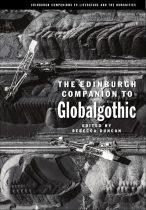
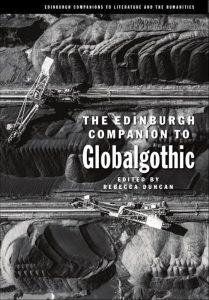 This article discusses three major media forms that drive the globalisation of Asian Gothic: literature originally written in English, film, and original television series created specifically for global SVOD platforms like Netflix, Amazon Prime or HBO Go. The article focuses in more detail on three texts: a novel Ponti (2018) written by a Singaporean author Sharlene Teo, discussed in a larger context of texts featuring a Malay monster known as the pontianak; a Taiwanese film The Tag-Along (Cheng 2015) examined in relation to other East Asian films that feature forest-dwelling child-like spirits/demons that imitate human voice and lure their victims into the wilderness; and an Indonesian mini-series Halfworlds (2015) produced by HBO Asia and directed by Joko Anwar, which will be situated in the context of the director’s overall engagement with folk horror. The article argues that such productions promote an understanding of globalgothic in terms of texts that reconfigure elements of Gothic in order to negotiate transnational relationships from the socio-historical or cultural vantage point of a certain region, in this case the regions of East and Southeast Asia, and that these texts are to a large extent the results of specific production and distribution practices and strategies characteristic of global media.
This article discusses three major media forms that drive the globalisation of Asian Gothic: literature originally written in English, film, and original television series created specifically for global SVOD platforms like Netflix, Amazon Prime or HBO Go. The article focuses in more detail on three texts: a novel Ponti (2018) written by a Singaporean author Sharlene Teo, discussed in a larger context of texts featuring a Malay monster known as the pontianak; a Taiwanese film The Tag-Along (Cheng 2015) examined in relation to other East Asian films that feature forest-dwelling child-like spirits/demons that imitate human voice and lure their victims into the wilderness; and an Indonesian mini-series Halfworlds (2015) produced by HBO Asia and directed by Joko Anwar, which will be situated in the context of the director’s overall engagement with folk horror. The article argues that such productions promote an understanding of globalgothic in terms of texts that reconfigure elements of Gothic in order to negotiate transnational relationships from the socio-historical or cultural vantage point of a certain region, in this case the regions of East and Southeast Asia, and that these texts are to a large extent the results of specific production and distribution practices and strategies characteristic of global media.